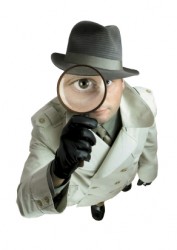 The counterfeit currency problem has been expanding to include the average person trying to print currency from their home printer. While many fake bills are easily spotted as such, the growing sophistication of these criminals are taking a toll on small businesses.
The counterfeit currency problem has been expanding to include the average person trying to print currency from their home printer. While many fake bills are easily spotted as such, the growing sophistication of these criminals are taking a toll on small businesses.
Recently the Connecticut Better Business Bureau was notified of a counterfeit $100 bill in circulation which was created from a $5 legal bill. The technique used by the criminals involved bleaching the legitimate $5 bill and then altering it to look like a $100 bill.
All employees should examine all bills they receive that are $10 and higher. Many counterfeiters start with small bills to test their products knowing most people do not pay attention to small bills.
The Secret Service has offered these methods to help you detect counterfeit bills.
- Hold a bill up to a light and look for a holograph of the face image on the bill. Both images should match. If the $100 bill has been bleached, the hologram will display an image of Abraham Lincoln, who appears on the $5 bills, instead of Benjamin Franklin.
- Looking at the bill through a light will also reveal a thin vertical strip containing text that spells out the bill’s denomination.
- I’d also like to pass on some tips from the U.S. Treasury:
- Color-shifting ink: If you hold the new series bill (except the $5 note) and tilt it back and forth, please observe the numeral in the lower right hand corner as its color shifts from green to black and back.
- Watermark: Hold the bill up to a light to view the watermark in an unprinted space to the right of the portrait. The watermark can be seen from both sides of the bill since it is not printed on the bill but is imbedded in the paper.
- Security Thread: Hold he bill a light to view the security thread. You will see a thin imbedded strip running from top to bottom on the face of a banknote. In the $10 and $50 the security strip is located to the right of the portrait, and in the $5, $20 and $100, it is located just to the left of the portrait.
- Ultraviolet Glow: If the bill is held up to an ultraviolet light, the $5 bill glows blue; the $10 bill glows orange, the $20 bill glows green, the $50 bill glows yellow, and the $100 bill glows red – if they are authentic!
- Microprinting: There are minute microprinting on the security threads: the $5 bill has “USA FIVE” written on the thread; the $10 bill has “USA TEN” written on the thread; the $20 bill has “USA TWENTY” written on the thread; the $50 bill has “USA 50” written on the thread; and the $100 bill has the words “USA 100” written on the security thread. Microprinting can be found around the portrait as well as on the security threads.
- Fine Line Printing Patterns: Very fine lines have been added behind the portrait and on the reverse side scene to make it harder to reproduce.
- Comparison: Compare the feel and texture of the paper with other bills you know are authentic.
If you suspect that you have received a counterfeit bill the US Treasury offers the following advise and precautions:
- Do not put yourself in danger.
- Do not return the bill to the passer.
- Delay the passer with some excuse, if possible.
- Observe the passer’s description – and their companions’ descriptions – and write down their vehicle license plate numbers if you can.
- Contact your local police department or call your local Secret Service office.
- Write your initials and date in the white border area of the suspected counterfeit note.
- Do not handle the counterfeit note. Place it inside a protective cover, a plastic bag, or envelope to protect it until you place it in the hands of an identified Secret Service Special Agent. You can also mail it to your nearest Secret Service office.
